Know thyself: A priest finds his way
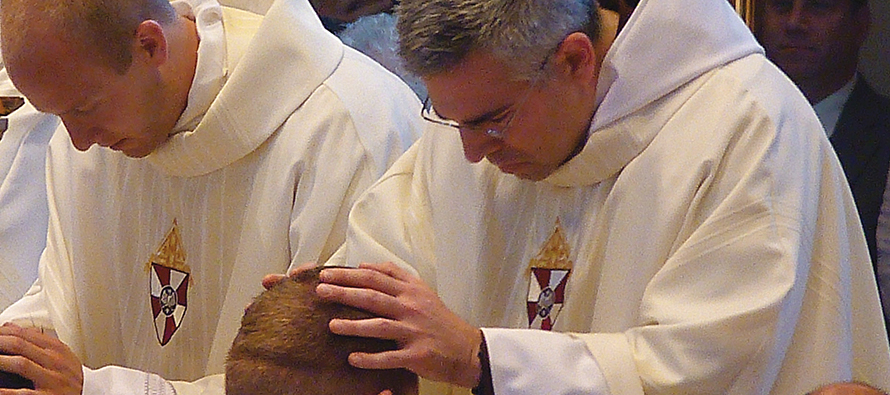
Image: FATHER MICHAEL BERRY, O.C.D. lays on hands during an ordination Mass for the Archdiocese of Milwaukee.
Some people think a religious vocation comes ready-made, one-size-fits-all, an unswerving trajectory straight from everyday life to the community or seminary with no detours or pauses along the way.
To that notion Father Michael Berry, O.C.D. laughed and said, “Well, not necessarily.”
Father Michael has been a Discalced Carmelite friar since 1998 and a priest since 2006. Currently the vocation director for the Washington, D.C. Province of the Discalced Carmelites, he makes his home in community with 12 other friars in a monastery at Holy Hill, Wisconsin, site of the province’s Marian shrine and parish about 30 miles north of Milwaukee.
Know yourself first
Like many Catholic young people, he learned about religious life early on. His grade school teachers near his home in Garnerville, N.Y. were Sparkill Dominican Sisters. His family knew the Salesians of Don Bosco at a nearby Marian shrine that the community staffed, and Michael chose to attend a Salesian high school.
Father Michael said he always felt some attraction toward religious life. “But even while you feel a call or fascination with the person of Christ,” he said, “there’s also a need to know yourself a bit,” your strengths and weaknesses, to know where you fit “before it all comes together.”
In both high school and college he was active in sports and was a top-notch javelin thrower (he attended the College of William and Mary on a partial sports scholarship). Like most young people, he was also very active socially. “I had lots of female friends,” he said, so the idea of becoming a priest “at that time was pretty much on the back burner.” But he was also involved in his Catholic faith in college, active in the Catholic Student Association, the pro-life movement, and eucharistic adoration.
Father Michael credited college with being “a time to better know my own desires and the longings of my heart.” While interning for a Wall Street financial firm for six summers, he spent his time after work visiting different religious communities in Manhattan. He read the works of the famous American Trappist monk Thomas Merton and during one spring break visited Merton’s Abbey of Gethsemani in Kentucky.
With an intellectual bent and love for chant, he joined the Dominicans (formally the Order of Preachers) at 22. He credits the order with giving him “excellent formation” and for introducing him to the order’s founder, Saint Dominic, a man of deep compassion.
But after three years, his spiritual storm hit.
“It was a time of real personal upheaval,” said the priest, now 43. “I wanted greater freedom. I was wrestling with whether celibacy could meet my hunger for intimacy. Until then I had never really considered marriage, but now I knew I needed to think about that.” At 25, he asked for a dispensation from his temporary vows and left the community.
He got a job for a year as an administrative secretary with the U.S. Bishops’ Conference in Washington, then with the religious education office for the Archdiocese of Washington. He started dating, fell deeply in love, and got engaged.
Still, his longing for a more contemplative life kept nudging him. At that point he wasn’t sure exactly where he was headed, but he knew where his heart was calling him, and he needed to pursue it. He broke the news to his fiancée (“that wasn’t easy,” he said, nor was ending the relationship).
Then he met the Discalced Carmelites. He liked their mix of contemplative community and active ministry. Drawn by their spirituality and life, he entered the community at 28.
Coming to Carmel
Today, when he’s not on the road meeting with young men discerning a vocation, Father Michael is ministering at Holy Hill. There together with the other friars he celebrates the Eucharist and Reconciliation for those who visit the shrine, offers spiritual direction, retreats, and days of recollection, and helps with the everyday tasks that keep a busy monastery running smoothly. He is also a member of the province’s Institute of Carmelite Studies, which presents programs and publishes books on themes of Carmelite spirituality and its saints.
For Father Michael, it wasn’t only the more contemplative focus of the life that drew him to Carmel, nor even the Liturgy of the Hours prayed in common, but the order’s two hours of silent personal contemplative prayer each day.
No matter how busy a Carmelite friar is, these two hours—one in the morning and one in the evening—are an anchor. He describes these more intense periods of prayer as “speed bumps in the day” that force a Carmelite to slow down.
According to the Carmelite rule of life, prayer and recollection should permeate the entire day. “But when you have to sit down, stop all the busyness, and sometimes just wait—that’s both a great challenge and a great gift,” he said. “As Saint Teresa and Saint John [of the Cross] taught, it’s time to just be present to the One who loves you.”
Another key factor in Father Michael’s attraction to Carmel were the order’s many saints—Teresa of Avila, John of the Cross, and Thérèse of Lisieux among the most well-known. “I felt the witness of these incredible saints, people whose writings are filled with such wisdom, even hundreds of years later,” he said. “I felt called to be a steward of that rich tradition, to do what I can to help hand it on in the church today.”
God in community
There are challenges to living the Carmelite vocation today, Father Michael admits, but many of these have been around since the first hermits, precursors of today’s Carmelites, gathered on Mount Carmel in the 12th century. The friars “do believe in a communion of goods, we all share things.” That’s definitely countercultural in a society where having material things or status or achievement becomes the standard of success. In addition, living with a group of men of all personality types, ages, and backgrounds isn’t always easy.
That focus on community-living among the friars was also a major draw, he said. “If it’s authentic, prayer leads you to love the people you live with. That’s where you find out if your prayer is real or not, living in community.” The fact that other men with you are living the life of prayer, too, is support for your own vocation, he said.
As his own vocational journey continues to unfold, what energizes Father Michael is the conviction that every day promises another encounter with God—“God who loves me, is faithful, and calls me to deep intimacy.
“If Carmelites make any sense at all,” he said, “it’s to be beacons that tell the world: God is near. God loves you. God is as real as it gets.”
Some people think a religious vocation comes ready-made, one-size-fits-all, an unswerving trajectory straight from everyday life to the community or seminary with no detours or pauses along the way.
To that notion Father Michael Berry, O.C.D. laughed and said, “Well, not necessarily.”
Father Michael has been a Discalced Carmelite friar since 1998 and a priest since 2006. Currently the vocation director for the Washington, D.C. Province of the Discalced Carmelites, he makes his home in community with 12 other friars in a monastery at Holy Hill, Wisconsin, site of the province’s Marian shrine and parish about 30 miles north of Milwaukee.
Know yourself first
Like many Catholic young people, he learned about religious life early on. His grade school teachers near his home in Garnerville, N.Y. were Sparkill Dominican Sisters. His family knew the Salesians of Don Bosco at a nearby Marian shrine that the community staffed, and Michael chose to attend a Salesian high school.
| FATHER MICHAEL prepares Keith and Kate Bersch for their 2011 wedding at the Chapel of St. Thomas at the University of St. Thomas in Minnesota. |
In both high school and college he was active in sports and was a top-notch javelin thrower (he attended the College of William and Mary on a partial sports scholarship). Like most young people, he was also very active socially. “I had lots of female friends,” he said, so the idea of becoming a priest “at that time was pretty much on the back burner.” But he was also involved in his Catholic faith in college, active in the Catholic Student Association, the pro-life movement, and eucharistic adoration.
Father Michael credited college with being “a time to better know my own desires and the longings of my heart.” While interning for a Wall Street financial firm for six summers, he spent his time after work visiting different religious communities in Manhattan. He read the works of the famous American Trappist monk Thomas Merton and during one spring break visited Merton’s Abbey of Gethsemani in Kentucky.
With an intellectual bent and love for chant, he joined the Dominicans (formally the Order of Preachers) at 22. He credits the order with giving him “excellent formation” and for introducing him to the order’s founder, Saint Dominic, a man of deep compassion.
| AT CHURCH OF LA SANTA in Avila, Spain. While accompanying young people to the 2011 World Youth Day, Father Michael and fellow pilgrims made a side trip to the home of Saint Teresa of Avila. |
“It was a time of real personal upheaval,” said the priest, now 43. “I wanted greater freedom. I was wrestling with whether celibacy could meet my hunger for intimacy. Until then I had never really considered marriage, but now I knew I needed to think about that.” At 25, he asked for a dispensation from his temporary vows and left the community.
He got a job for a year as an administrative secretary with the U.S. Bishops’ Conference in Washington, then with the religious education office for the Archdiocese of Washington. He started dating, fell deeply in love, and got engaged.
Still, his longing for a more contemplative life kept nudging him. At that point he wasn’t sure exactly where he was headed, but he knew where his heart was calling him, and he needed to pursue it. He broke the news to his fiancée (“that wasn’t easy,” he said, nor was ending the relationship).
Then he met the Discalced Carmelites. He liked their mix of contemplative community and active ministry. Drawn by their spirituality and life, he entered the community at 28.
Coming to Carmel
Today, when he’s not on the road meeting with young men discerning a vocation, Father Michael is ministering at Holy Hill. There together with the other friars he celebrates the Eucharist and Reconciliation for those who visit the shrine, offers spiritual direction, retreats, and days of recollection, and helps with the everyday tasks that keep a busy monastery running smoothly. He is also a member of the province’s Institute of Carmelite Studies, which presents programs and publishes books on themes of Carmelite spirituality and its saints.
| FATHER MICHAEL and Father Phillip Thomas, O.C.D. with canine friends. |
No matter how busy a Carmelite friar is, these two hours—one in the morning and one in the evening—are an anchor. He describes these more intense periods of prayer as “speed bumps in the day” that force a Carmelite to slow down.
According to the Carmelite rule of life, prayer and recollection should permeate the entire day. “But when you have to sit down, stop all the busyness, and sometimes just wait—that’s both a great challenge and a great gift,” he said. “As Saint Teresa and Saint John [of the Cross] taught, it’s time to just be present to the One who loves you.”
Another key factor in Father Michael’s attraction to Carmel were the order’s many saints—Teresa of Avila, John of the Cross, and Thérèse of Lisieux among the most well-known. “I felt the witness of these incredible saints, people whose writings are filled with such wisdom, even hundreds of years later,” he said. “I felt called to be a steward of that rich tradition, to do what I can to help hand it on in the church today.”
| FATHER MICHAEL (center) after Mass with a group of young men who attended a “come & see” weekend at the Discalced Carmelite Friars’ Marian Shrine, Holy Hill, Wisconsin. From left: Alex Swetz (Ohio), Rolando Reyes (Florida), and Frank DiVito, a novice with the Discalced Carmelite friars of the Washington Province. |
There are challenges to living the Carmelite vocation today, Father Michael admits, but many of these have been around since the first hermits, precursors of today’s Carmelites, gathered on Mount Carmel in the 12th century. The friars “do believe in a communion of goods, we all share things.” That’s definitely countercultural in a society where having material things or status or achievement becomes the standard of success. In addition, living with a group of men of all personality types, ages, and backgrounds isn’t always easy.
That focus on community-living among the friars was also a major draw, he said. “If it’s authentic, prayer leads you to love the people you live with. That’s where you find out if your prayer is real or not, living in community.” The fact that other men with you are living the life of prayer, too, is support for your own vocation, he said.
As his own vocational journey continues to unfold, what energizes Father Michael is the conviction that every day promises another encounter with God—“God who loves me, is faithful, and calls me to deep intimacy.
“If Carmelites make any sense at all,” he said, “it’s to be beacons that tell the world: God is near. God loves you. God is as real as it gets.”
Tags
Related
- We’re different—in a good way: Profile of Father Roberto Mejia, O.Carm.
- Man with a mission
- Monastic life is habit-forming
- Ministering to migrants in a carport cathedral
- Connections make the man: Profile of Father Kevin Zubel, C.Ss.R.
- A priest (who’s been there) responds to the pain of addiction
- In search of healing, one story at a time
- A dream rekindled: Profile of Father Luis Romero, C.M.
- Secrets to being a happy priest
- Ed's story: Lose a dream, find a life Read More
Most Viewed
- Find your spirituality type quiz
- FAQs: Frequently asked questions about vocations
- Celibacy quiz: Can you live a celibate life?
- Resources for older discerners or those with physical and developmental differences
- About Vocation Network and VISION Guide


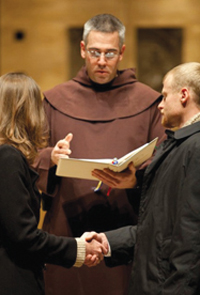
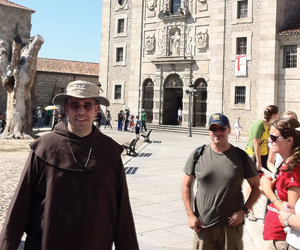
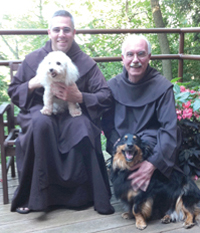
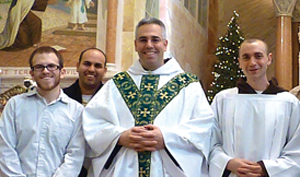
 Pat Morrison is editorial director of ICS Publications, the publishing house of the Discalced Carmelite Friars/Institute of Carmelite Studies. She is a vowed laywoman in the Carmelite tradition and a member of the Association of Contemplative Sisters.
Pat Morrison is editorial director of ICS Publications, the publishing house of the Discalced Carmelite Friars/Institute of Carmelite Studies. She is a vowed laywoman in the Carmelite tradition and a member of the Association of Contemplative Sisters.